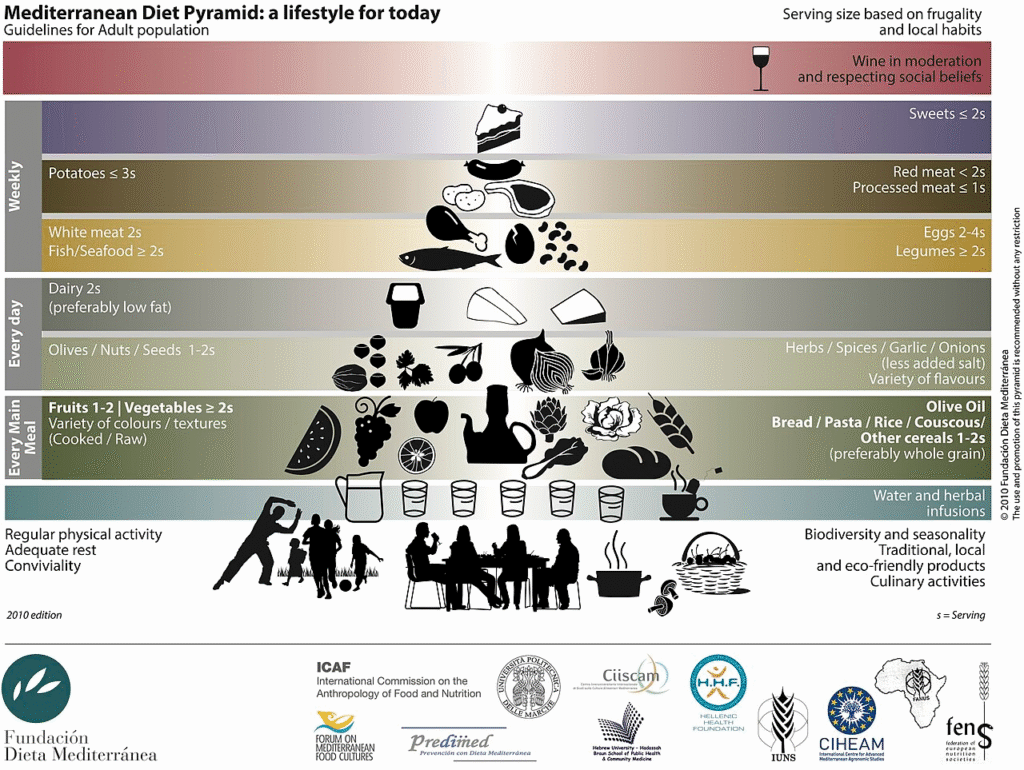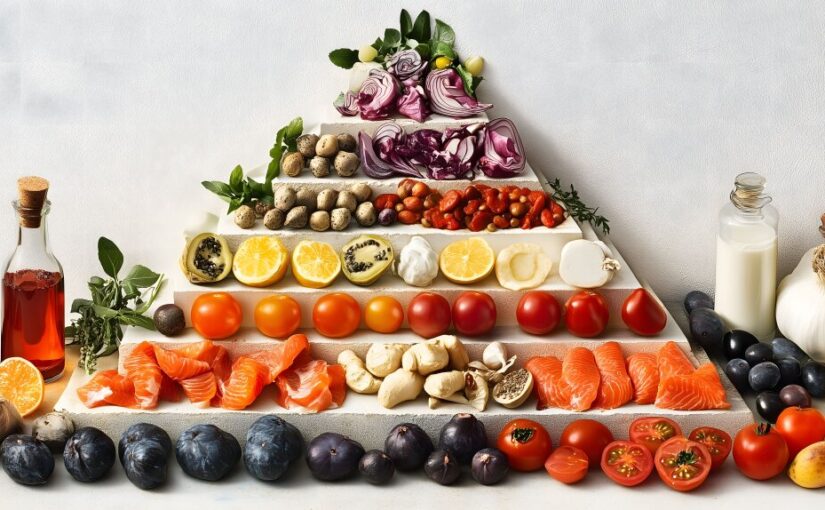Nestled between sun-drenched coasts and ancient olive groves, the Mediterranean Sea cradles a tapestry of cultures that have shaped the world’s most celebrated way of eating. From the rolling hills of Italy and France to the vibrant shores of Spain in the north, the eastern embrace of Greece, Turkey, Israel, Lebanon, and Syria brings layers of history and spice. Further south, the North African nations of Egypt, Tunisia, Morocco, Algeria, and Libya add their own earthy rhythms to the mix. This mosaic of lands fosters cuisines as varied as the landscapes themselves: think of the tagines simmering with cumin and preserved lemons in Morocco, or the simple pasta al pomodoro bursting with fresh basil in southern Italy. Yet beneath these differences lies a shared foundation, a dietary philosophy that prioritizes abundance from the earth and sea. This is the heart of the Mediterranean diet, a pattern of eating that transcends borders and invites everyone to savor life through wholesome, vibrant foods.
The concept crystallized into something tangible in the 1990s, when researchers sought to capture this essence in a visual guide. Born from a partnership between the Harvard School of Public Health and Oldways, a nonprofit dedicated to preserving cultural food traditions, the Mediterranean Diet Pyramid emerged as a beacon for healthy living. Its roots trace back to the groundbreaking Seven Countries Study, launched in the late 1950s by American physiologist Ancel Keys. Keys and his team examined heart health across nations, and one pattern stood out: residents of Crete, with their reliance on fresh produce, grains, and legumes while keeping saturated fats at bay, showed remarkably low rates of coronary heart disease. This wasn’t about deprivation; it was about balance, drawing from everyday habits that had sustained generations. The Pyramid doesn’t prescribe a uniform menu for the entire basin. Instead, it honors the common threads, offering a flexible framework that adapts to local flavors while steering clear of rigid rules.
At its base, the Pyramid builds a daily rhythm around plant-powered staples. Vegetables and fruits take center stage, providing color, crunch, and nutrients in every meal, whether as a Greek horiatiki salad brimming with tomatoes and cucumbers or a Tunisian mechouia of grilled peppers and onions. Whole grains like barley, bulgur, and farro form the sturdy foundation, often simmered into hearty soups or paired with legumes such as chickpeas and lentils for protein that feels light yet satisfying. Olive oil, that golden liquid from ancient presses, drizzles over everything, delivering monounsaturated fats that nourish the body without overwhelming it. Moving upward, fish and seafood appear several times a week, sourced fresh from the sea, evoking the fishing villages of Lebanon or the coastal markets of Algeria. Poultry, eggs, and dairy like yogurt and cheese enter the picture moderately, adding creaminess without dominating. Red meats and sweets hover at the tip, reserved for special occasions, treated as indulgences rather than everyday fare.

This structure reflects a deeper philosophy, one where ingredients play supporting roles in a symphony of flavors. A sprinkle of feta or a thin slice of prosciutto might accent a dish, but they never steal the show from the vegetables or grains. Heavy sauces give way to bright enhancements: a swirl of tahini in a Syrian eggplant dip, or yogurt laced with garlic and herbs in a Turkish cacik. Freshness reigns, pulling from what’s in season and local, a nod to the farmers’ markets of Provence or the souks of Marrakech. In this approach, meals become acts of creativity, not excess.
Beyond the plate, the Mediterranean diet weaves in the joys of community and rhythm. Meals unfold slowly, often around a shared table where stories flow as freely as the wine, fostering connections that studies link to better mental well-being. This isn’t just food; it’s a lifestyle that includes leisurely walks through olive orchards or siestas under the afternoon sun. Science backs the allure. Research, including long-term trials like the PREDIMED study, shows adherents enjoy lower cholesterol, steadier blood pressure, and sharper cognitive edges, potentially warding off conditions from diabetes to dementia. The diet’s emphasis on anti-inflammatory foods, rich in antioxidants from berries and greens, supports stable blood sugar and even aids weight management. Notably, it’s not a low-fat regimen; the fats from olives, nuts, and fish prove that quality matters more than quantity, leading to fuller satisfaction and sustained energy.
Translating this pyramid into daily life starts with rethinking the plate. Let plants and grains lead: build a meal around a quinoa tabbouleh or roasted ratatouille, then add a modest portion of grilled sardines or chicken. Keep proteins to about four to six ounces, enough to complement without overshadowing. Swap butter for olive oil in sautés, or blend tahini and lemon for a dressing that brightens without weighing down. Herbs like oregano, mint, and za’atar bring the region’s soul, turning simple ingredients into something extraordinary. And remember the ritual: gather with loved ones, linger over the flavors, and let the meal stretch into conversation. For a quick example, picture a balanced plate of herb-rubbed baked mackerel alongside a lentil salad dotted with parsley and cherry tomatoes, finished with roasted zucchini and a generous pour of extra-virgin olive oil. It’s straightforward, nourishing, and utterly Mediterranean.
Embracing the Pyramid means stepping into a tradition that has endured for millennia, one that bridges ancient wisdom with today’s wellness quests. Whether you’re in a bustling city kitchen or a quiet countryside home, these principles invite experimentation and delight. Start small, swap one habit at a time, and discover how the Mediterranean way can infuse your table with vitality and joy.
Header image: Marco Verch.
If our work has inspired you, helped you grow, or simply brought a little warmth to your day, consider supporting Thalysia.com with a small donation. Your contribution helps us continue exploring ancient landscapes, documenting local traditions, and celebrating the art of living well.
